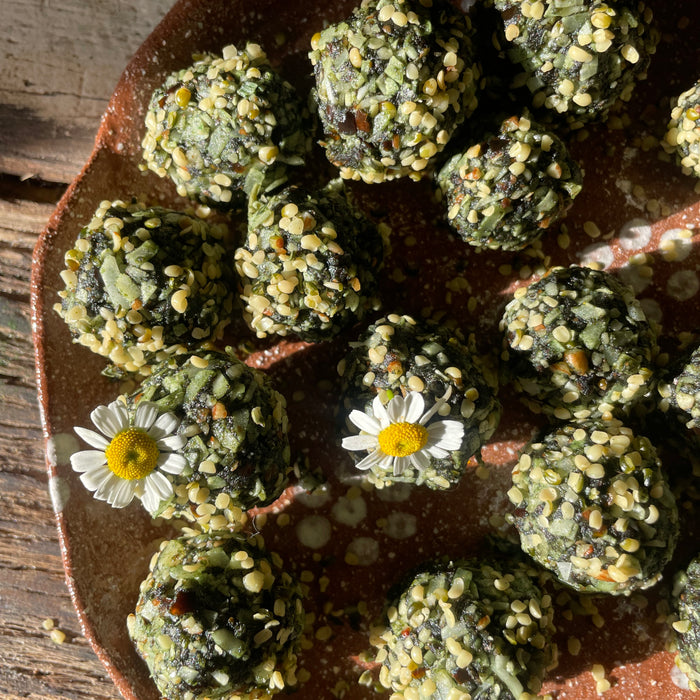Spirulina Energy Balls


In accordance with health and safety regulations our cut foods must be wrapped and packaged. We now use a biodegradable plastic that leaves no residue or particles within 6 months in a typical landfill situation (dependent on conditions).
Please see https://www.biogone.com.au for more information.
Please note that it is still undesirable for biodegradable plastics to reach the oceans or waterways, as there are not as many microbes to cause the needed bio-activity.
What does Landfill Biodegradable mean?
Bio-Gone Plastics uses a patented additive to make our disposable products landfill-biodegradable. This means that the plastics will decompose under typical landfill environmental conditions much faster than traditional plastics which have an indefinite life span. Biodegradation of plastic is achieved by enabling microorganisms to metabolise (i.e. break down) the molecular structure of the plastic, which produces an humus-like material (organic matter that cannot break down any further) which is a natural plant fertiliser. There are two different ways this is achieved in industry.
Landfill-Biodegradable Plastics are made by combining traditional plastic, which is petroleum-based, with an organic additive. The biodegradation only begins when the plastic is exposed to a microbe rich environment such as in a landfill. The additive attracts microbes to the plastic and they start to digest it. As they do this, the enzymes the microbes secrete cause the plastic polymer molecules to break down into shorter chains, which the microbes can then begin to digest them too. The biodegradability of a plastic can be confirmed using the standard laboratory test ASTM D5511.
Advantages of Landfill-Biodegradable plastics:
We thank you for joining us in our passion to protect our environment and communities for future generations.